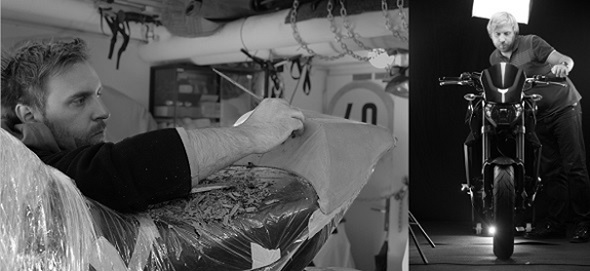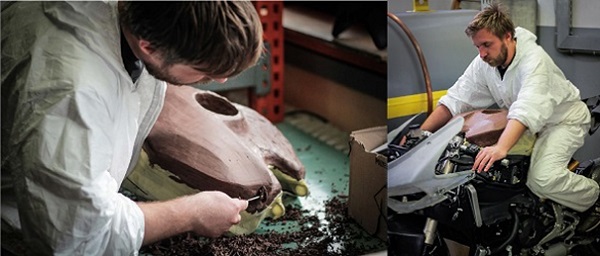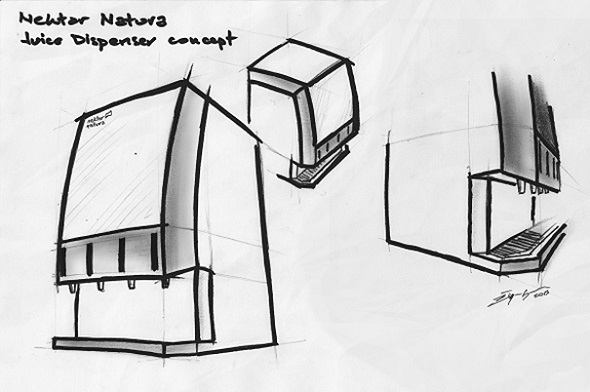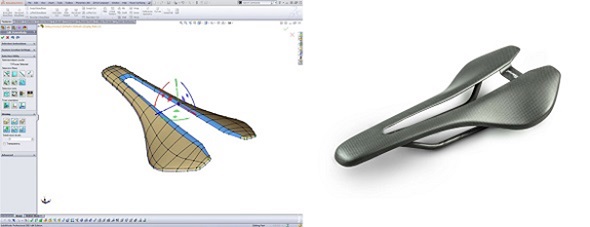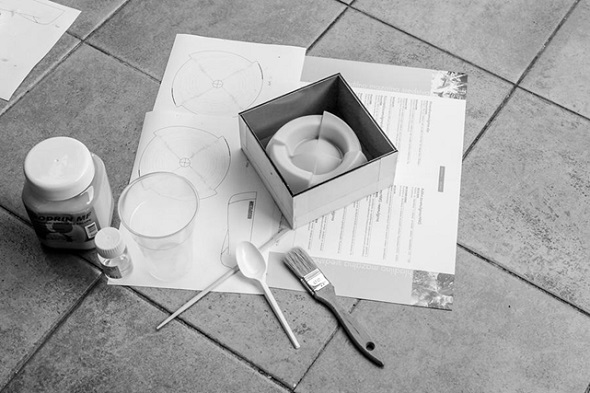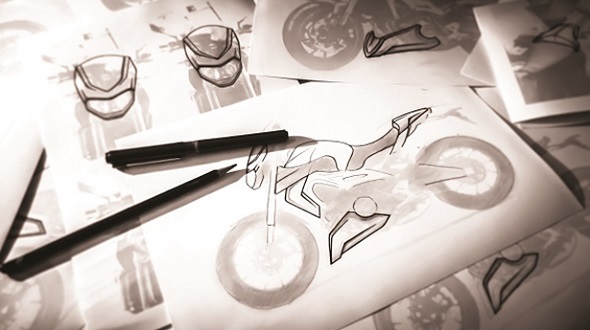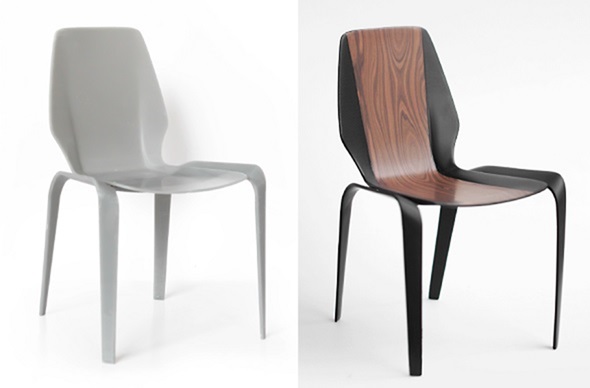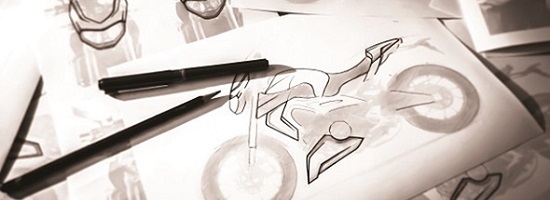
Creating Unique Design Solutions with 3D Printing: This Modern Design Studio Uses 3D Prints to Enhance Its Workflow
3D printing has opened up more possibilities for design studios. Exploring new materials, creating new forms and shapes, designing highly-detailed prototypes: there are many advantages for designers by using 3D printing. We visited one of our clients, Slovenian design studio Gorjup Design, to see how 3D printing is changing their everyday work.
Hello Žiga, tell us a bit about yourself.
I am Žiga Gorjup, a 30-year-old product and graphic designer from Slovenia. While I was still in school, I gained a lot of experience at a couple of companies, mostly in industrial and graphic design. By the end of my studies, I started my own design company, Gorjup Design, to carry out my life’s mission of creating unique design solutions for various industries.
What do you do in your everyday life?
My everyday life is actually completely centered around design – I can admit, I am a workaholic. Besides designing and thinking of new forms and solutions, I also enjoy riding my motorcycle and bicycle as well as cross-country skiing. My passion for motorcycles has actually grown into a business; I started to design motorcycle and bicycle components made of carbon fiber and created my own design studio.
Besides creating custom components for upgrading motorcycles, I worked on various different projects: from designs for beverage dispensers, biathlon rifle stocks, high-end speaker systems, and exhibition stands, to my newest creations in furniture design: a light and minimalistic chair. The main goal for my chair project is to design high-end chairs that will weigh under 2 kg, be durable, be very ergonomic, look minimalistic, and have a high-end carbon fiber and wood combination finish. For now, only the 3D printed scale models of the chairs are complete. The table that will fit with the chairs is still only a sketch due to lack of free time. Hopefully, this project will be finished in the near future.
Where do you get your inspiration from?
Mostly I get inspired by nature, with all its simple structural shapes. Also, new technologies often offer various shapes and forms that lead to new ideas regarding shape and function. But most importantly, my designs are always defined by their function, and are created using the most effective manufacturing technique at a given moment for the chosen material.
Can you describe your style in just a few words?
Simple, minimalistic, flowing and manufactural shapes, with different material combinations, with the least amount of painting as possible. I prefer to keep the material color and finish untouched.
When did you start using 3D printing technology and which 3D design software do you use most?
I started to use 3D printing technology about 10 years ago, during my studies when I worked for a company that was experimenting with new technologies. Back then, I also started working on reverse engineering and actually got familiar with rapid prototyping.
When I first discovered 3D modeling, I worked with Rhino, which was the best software to get familiar with the 3D environment at the given moment. Then I discovered SolidWorks software, which offers better and faster design options for simple structural shapes. After half a year of using and learning the SolidWorks software on real projects, I started using it for surface modeling more and more frequently, and from that moment on there was no return.
I have been using SolidWorks software for over 8 years now. The only thing I was missing for almost all those years was the PowerSurfacing plug-in that offers polygonal modeling in the SolidWorks environment and the ability to design really complex surfaces in the shortest time possible. I have been using this plug-in for 2 years now and, I must admit, my design range got wider. And best of all, SolidWorks is offering a wide range of evaluation tools that keep you on the safe side when designing final models or tools for manufacturing.
Which materials did you use and which are your favorite to 3D print in, and why?
I have tried several materials for my 3D prints: multicolor, mammoth resin, gray resin and transparent resin. All materials are really good, it just depends on the end-use of your 3D printed model. In my experience, the best materials were gray resin and transparent resin, as you can improve the finish manually with some sanding and polishing.
Gray resin material is really good for making a master models from which you are making the silicone molds. Also, the gray resin is the best material for its price, has really good details, and is strong yet flexible enough to offer good and carefree finishing. Transparent resin is really good as a master model for making carbon fiber molds.
Please describe your workflow a little.
My workflow is actually quite the same for all designs: it all starts with simple basic/rough sketch of an idea. After I sketch the basic shape or idea, I quickly start 3D modeling, as it always shows you some problems you haven’t thought of before. After the basic 3D model and some variations of it are done, I often need to sleep on it and re-think the shapes and forms. Sometimes I need to start again from scratch, but mostly I just do some extra corrections and start with studio renderings. After this, I re-check the models again and if I am happy, I usually go to prototyping.
How does 3D printed prototyping work?
Prototyping depends on the material that will be used for the final product. I had projects where I 3D printed the items on a 1:1 scale and used the model as master model for a silicone mold. Another approach is to make a 3D printed scale model of the design, as was the case for the carbon fiber chair project. The 3D printed scale models can be post-processed with sanding, polishing, painting, or even with decals and easily shown to potential investors, just to show them the basic principle. My Yamaha MT-09 project yet was a little bit different. I designed 1:1 scale parts for the motorcycle, using automotive clay. The clay pieces then underwent 3D scanning. After I received the 3D scanning data, the parts were sent for 3D printing.
Where can we find more of your work?
You can find my work on my website www.gorjupdesign.si, on my Facebook page www.facebook.com/gorjupdesign, and on Behance.net: www.behance.net/GorjupDesign.
Žiga’s business shows once again how 3D printing can be used by all kinds of professions, and benefit all kinds of industries. Click here to read more about how 3D printing can help architects, or see examples of how jewelry designers and a tech start-up use our services. Have you also used i.materialise’s 3D printing service to make your products even better? Let us know and say “Hi” in our forum or tag @imaterialise on Twitter.
Recommended Articles
No related posts.


